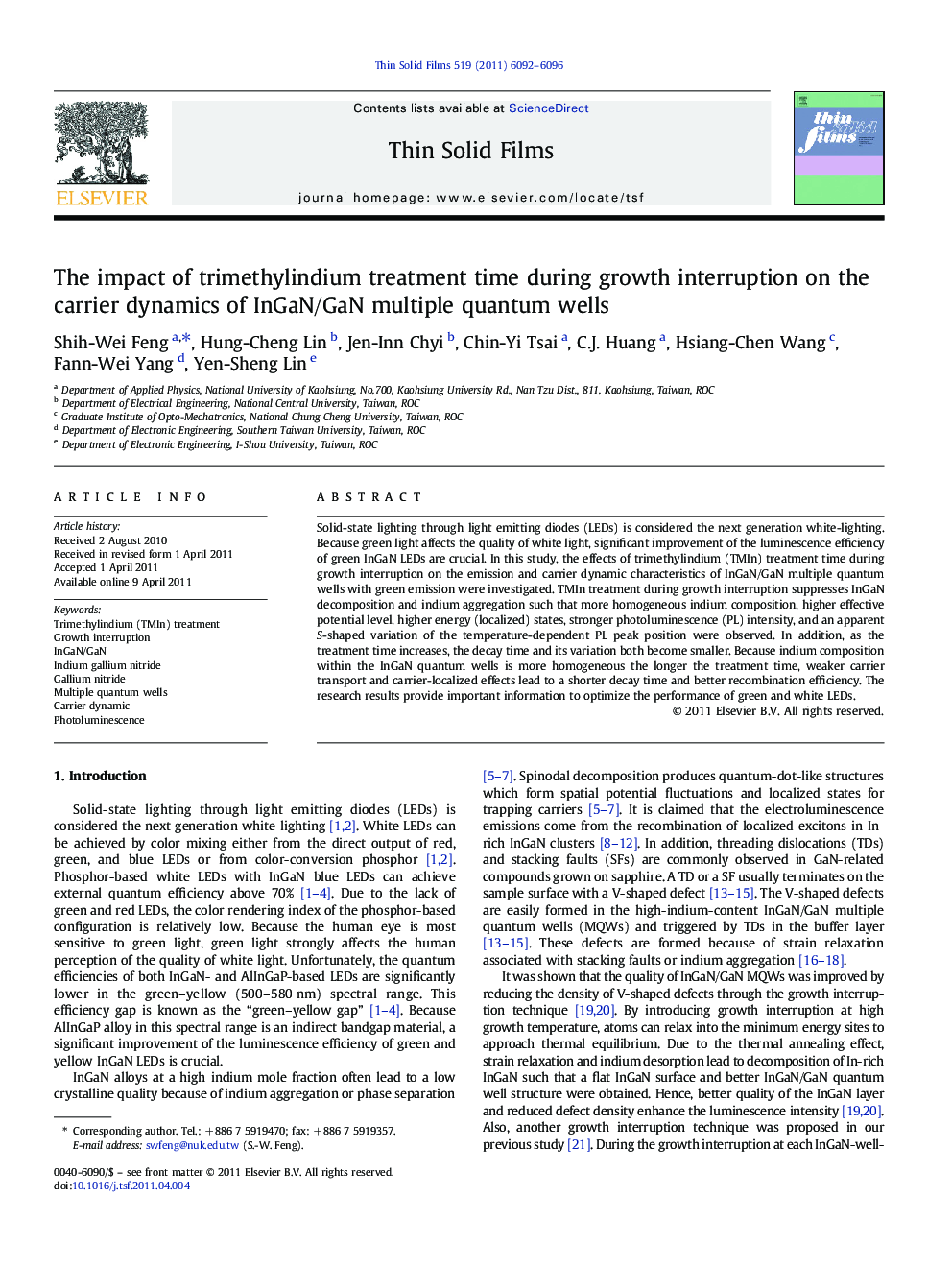| Article ID | Journal | Published Year | Pages | File Type |
|---|---|---|---|---|
| 1668582 | Thin Solid Films | 2011 | 5 Pages |
Solid-state lighting through light emitting diodes (LEDs) is considered the next generation white-lighting. Because green light affects the quality of white light, significant improvement of the luminescence efficiency of green InGaN LEDs are crucial. In this study, the effects of trimethylindium (TMIn) treatment time during growth interruption on the emission and carrier dynamic characteristics of InGaN/GaN multiple quantum wells with green emission were investigated. TMIn treatment during growth interruption suppresses InGaN decomposition and indium aggregation such that more homogeneous indium composition, higher effective potential level, higher energy (localized) states, stronger photoluminescence (PL) intensity, and an apparent S-shaped variation of the temperature-dependent PL peak position were observed. In addition, as the treatment time increases, the decay time and its variation both become smaller. Because indium composition within the InGaN quantum wells is more homogeneous the longer the treatment time, weaker carrier transport and carrier-localized effects lead to a shorter decay time and better recombination efficiency. The research results provide important information to optimize the performance of green and white LEDs.
